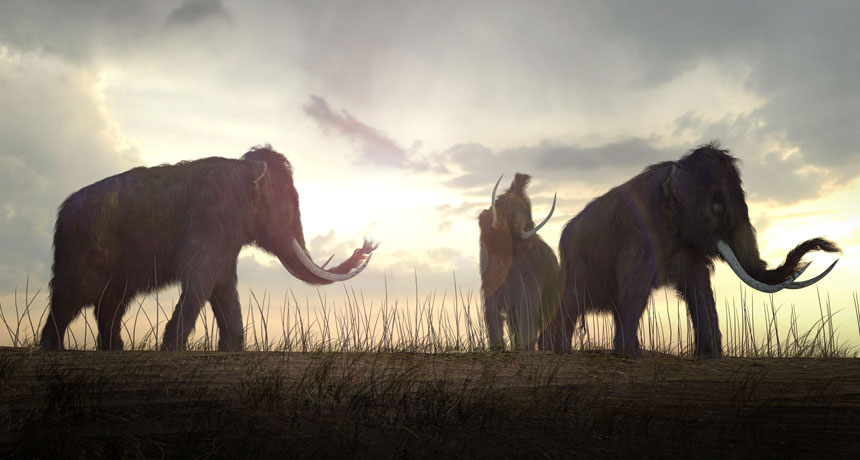Woolly mammoths’ last request: Got water?

Thirst drove one of the last populations of woolly mammoths to extinction.
A small group of holdouts on an isolated Alaskan island managed to last about 8,000 years longer than most of their mainland-dwelling brethren. But by about 5,600 years ago, the island’s lakes — the only source of freshwater — became too small to support the mammoths (Mammuthus primigenius), scientists report online the week of August 1 in the Proceedings of the National Academy of Sciences.
“I don’t think I’ve ever seen something so conclusive about an extinction before,” says Love Dalén, an evolutionary geneticist at the Swedish Museum of Natural History in Stockholm who was not involved in the research. The study highlights “how sensitive small populations are and how easily they can become extinct.”
Surprisingly recent woolly mammoth bones had previously been discovered in a cave on St. Paul Island, which became isolated from the mainland roughly 14,000 years ago. Since there’s no evidence that prehistoric humans lived on St. Paul, the find provided a chance to study extinction in the absence of human influence, says Russell Graham, a paleontologist at Penn State who led the study.
The scientists extracted a core of sediment from a lake bed near the cave to see how environmental conditions had changed over the last 11,000 years. The team found remnants of ancient plants, animals and fungi in the sediment — including traces of mammoth DNA in some layers. By analyzing and dating the different sediment layers, the team could infer when and how the mammoths went extinct.
“We initially thought that vegetation change and habitat would be the major driving factor,” Graham says. Instead, his team found a wealth of evidence — including an increase in salt-tolerant algae and crustaceans 6,000 years ago — suggesting freshwater shortages as the culprit.
A warmer climate after the last Ice Age ended contributed to the St. Paul mammoths’ downfall. Sea level rise shrank the mammoths’ island habitat and cut into their freshwater supplies by raising the water table and making the lake saltier over time, the team concluded. Warmer, drier conditions also caused water to evaporate more quickly from the lake surface.
The study highlights an often-overlooked vulnerability of island and coastal communities. Some islands in the South Pacific are currently experiencing similar freshwater shortages thanks to rising seas, Graham says – and Florida could be next in line. That’s particularly bad news for large island-dwelling and coastal mammals, which tend to need more water to survive than smaller species.